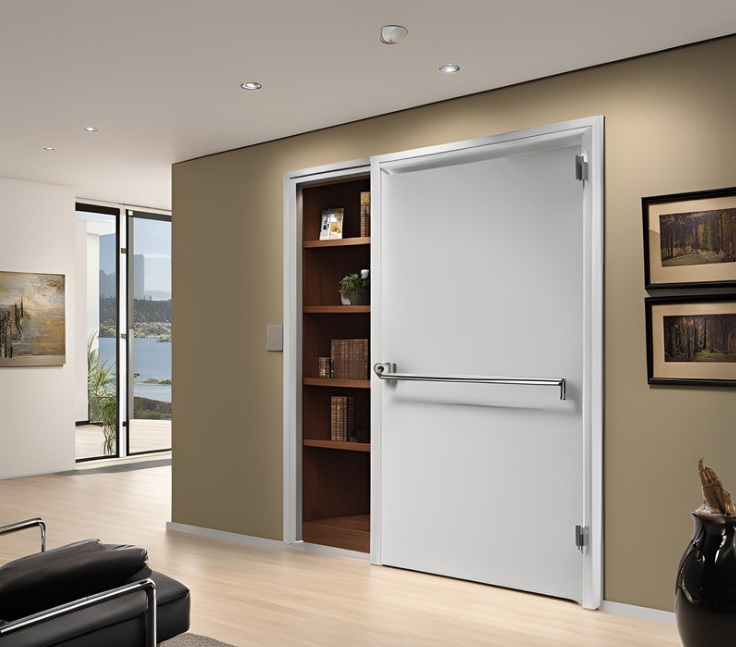With rising energy costs and environmental issues, many people feel an increasing need to find ways to cut consumption and support sustainability.
One often overlooked area where energy efficiency can be improved is ceiling access doors, which provide easy access to vital building components like ductwork, wiring, and plumbing.
Opting for eco-friendly ceiling access doors minimizes energy waste and fosters a greener, more efficient property.
In this blog post, we’ll explore how upgrading energy-efficient ceiling access doors can benefit residential and commercial buildings.
Importance of Energy Efficiency in Modern Buildings
Energy efficiency is more important than ever in modern buildings. Using less power can save property owners and occupants money on heating, cooling, and lighting. It also helps the planet by reducing energy waste and greenhouse gas emissions.
Efficient buildings offer a more comfortable experience, with better temperature and air quality. With more focus on sustainability, upgrading to energy-efficient solutions can boost property value and make buildings more attractive to buyers or tenants.
What Are Ceiling Access Doors?
Ceiling access doors are small, often concealed panels installed in ceilings to provide easy access to important components like electrical wiring, ductwork, plumbing, or HVAC systems.
These doors are crucial for residential and commercial properties. They allow maintenance crews and property owners to access hard-to-reach areas without damaging the ceiling.
Many ceiling access doors, such as the GFRG-R ceiling access door, enhance green building efforts by improving energy efficiency. They blend seamlessly with the surroundings and provide a lightweight yet durable solution, preventing constant replacement and reducing material waste. Some models are LEED-certified, helping buildings meet sustainability standards and earn valuable LEED credits.
Benefits of Energy-Efficient Access Doors
Energy-efficient ceiling access doors offer many advantages for residential, commercial, and industrial buildings. Here are some of the:
- Reduced Energy Costs: Energy-efficient access doors are designed to minimize air leaks, which can significantly reduce heating and cooling expenses. By creating a tighter seal, these doors help maintain indoor temperatures, reducing the workload on HVAC systems and saving money on energy bills.
- Improved Insulation: These doors typically feature enhanced insulation properties, contributing to a more stable indoor environment. Improved insulation helps buildings stay cooler in the summer and retain warmth in the winter, enhancing overall comfort.
- Sustainability: Energy-efficient access doors reduce a building’s carbon footprint. They support sustainability initiatives, helping people contribute to a healthier planet and adhere to environmental standards.
- Increased Property Value: Upgrading to energy-efficient access doors can enhance a property’s overall value. Potential buyers or tenants often seek energy-efficient features, making the building more attractive in a competitive market.
- LEED Certification: Many energy-efficient access doors qualify for LEED credits. This certification demonstrates a commitment to sustainability and can also lead to financial incentives and grants for those looking to improve their properties.
Materials and Features to Look in a Ceiling Access Door
When choosing a ceiling access door, it’s important to consider the materials and features that suit your project’s needs. Check out the materials and features to look for:
- Material Composition: Common materials for ceiling access doors include metal, drywall, and glass fiber reinforced. Metal doors offer durability, while drywall options can blend seamlessly with the ceiling. Choosing the right material can impact insulation and overall performance.
- Insulation Properties: Look for doors with good insulation to prevent energy loss and maintain temperature control. Insulated access doors help reduce heating and cooling costs, making them ideal for energy-efficient buildings.
- Fire Rating: If the access door is required in a fire-rated area, ensure it meets fire safety standards. Fire-rated doors help contain fire and smoke for a period, enhancing the building’s integrity.
- Ease of Installation: Consider how straightforward the installation process is, especially in tight spaces. Doors designed for quick installation can save time and labor costs, making them more convenient for builders and property owners.
- Security Features: If the access point requires additional security, look for doors with locking mechanisms or tamper-proof designs. These features can protect sensitive areas and deter unauthorized access.
Step-by-Step Guide to Installing Ceiling Access Doors
Installing a ceiling access door can seem daunting, but it can be a straightforward process with the right guidance. Here’s a guide to walk you through the installation process:
- Gather Tools and Materials: Start by collecting all the necessary tools and equipment, including a measuring tape, level, drill, screws, and the chosen access door. Being well-prepared will facilitate a smoother installation process.
- Measure and Mark the Opening: Carefully measure the door size and mark the proper location in the ceiling. Accurate measurements are necessary to guarantee a proper fit and avoid installation complications.
- Cut the Opening: Cut the marked opening in the ceiling using a drywall or similar tool. Avoid any electrical wires or plumbing that may be concealed within the structure.
- Install the Frame: Place the access door frame into the newly cut opening and secure it with screws according to the manufacturer’s instructions. Ensure the frame is level, adjusting necessary for a flush fit.
- Attach the Door Panel: Finally, attach the access door panel to the frame, ensuring it works smoothly and securely. Do a final check to ensure the door functions properly and fits perfectly within the frame.
Conclusion
Upgrading to eco-friendly ceiling access doors is a smart investment for property owners looking to maximize energy efficiency. The doors help reduce energy costs, improve insulation, and contribute to sustainability by lowering a building’s carbon footprint.
With options like insulated and fire-rated models, these access doors cater to various needs while enhancing overall building performance.




